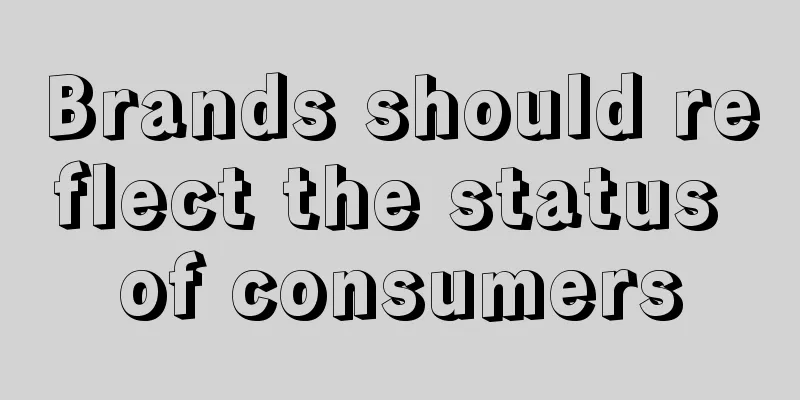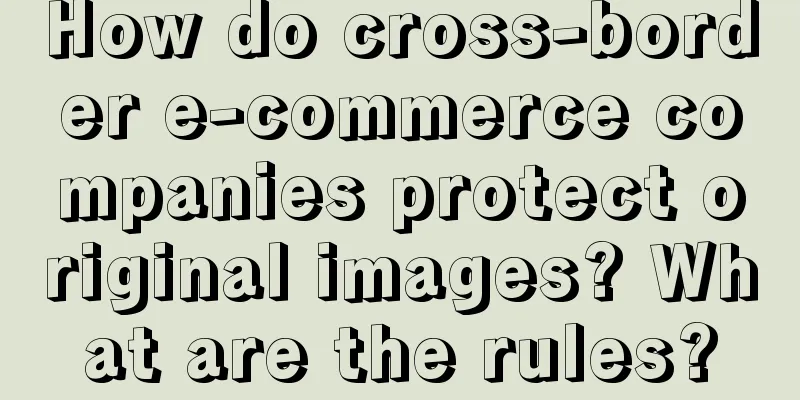Brands should reflect the status of consumers

01There are many different opinions about the origins of brand marketing, but if we put aside the short 60 years of modern marketing development and start from the broadest definition, the history of brand marketing is as long as the history of mankind itself. Because brand marketing not only meets our need to connect with people of the same kind , but also meets our need to distinguish ourselves from people of different types. With the advent of mobile Internet, our view on brand marketing and its role has undergone a major change, but the key elements of brand marketing have remained the same. People no longer consciously use and analyze these elements. For example, branded goods in early society gave consumers a sense of uniqueness and social status, but later, the sale of branded goods no longer has this characteristic, but instead focuses more on the high-quality functions of the goods. This is because, in the early society, the functionality of commodities was not fully developed, so consumers would pay more attention to the social nature of commodities. 02The development of brand marketing and marketing is actually based on the development of social economy. As Maslow said, "People will not look for new needs at a higher level before their immediate needs are met. " The "hierarchy of needs theory" proposed by Maslow is widely used in modern brand marketing. We can often see Maslow's "hierarchy of needs pyramid model" in PPTs about brand marketing. In life, when we pursue higher-end products or brands, we need to have a strong enough economic foundation to support it. For most people in developed countries, this can be satisfied. Of course, this is not applicable to everyone, because historical and cultural factors also play a big role in it. For example, the West entered the era of experience economy as early as the 1980s, but Asian countries and countries in many parts of the world have only truly entered the era of experience economy in recent years. This has made some Western "politicians" feel a strong threat, and they have begun to try to prevent most countries in Asia or other parts of the world from entering the experience society by "messing up the world." Because they believe: "If people, including the Chinese, live like Americans, it will be a tragedy for the world." 03The development of brand marketing is not a matter of A replacing B, but of layers upon layers. One viewpoint becomes dominant, which changes mainly due to socio-economic conditions, sometimes from person to person, and to varying degrees due to brand social participation and socio-psychological background. Sometimes, we regard brands as a guarantee of quality, such as when we buy milk powder for babies. Sometimes, we are happy to participate in the brand concept and are completely attracted by the brand legend, such as when we drink French red wine or Chinese liquor, the brand legend and story are particularly important to us. In recent years, countless Guizhou sauce wine brands have been born. In addition to the characteristics of the sauce wine itself, the core is that the sauce wine has countless brand stories to tell, such as the World Expo Gold Award, the national wine, the wine drunk by leaders, etc. Sometimes, we like a brand because the brand's products can help us establish connections with others, form topics or talk, and then we like a brand concept. 04Brand means quality: Procter & Gamble, the global king of daily chemicals, is one of the first companies to create unique marketing and brand marketing through market trends and brand communication strategies. Vidal Sassoon, Pantene, Head & Shoulders and Rejoice, owned by Procter & Gamble, are well known to Chinese people. "The clothes are stained with the breath of legend, mixed with the fragrance of aloe vera and cinnamon. Outside the ivory palace, everything is cast in gold." This was the inspiration for Proctor to name the soap "Ivory Soap". Proctor also used "100% pure" as the selling point of Ivory Soap. Because he found a selling point to support it: "Only such pure soap can be lighter than water." Coca-Cola's marketing strategy is completely different from Protke's. In the early 20th century, Protke did not fully commercialize brand marketing, while Coca-Cola's marketing model was to focus on functional benefits. Brand marketing is the preferred way to guide and ensure product quality. Starting from reality, it distinguishes one's own products from other products and establishes a good reputation, which enables merchants to price their products at the price of high-quality products. 05Brands have their own unique symbols: Veblen first discussed the symbolic role of brands in his 1899 book The Theory of the Leisure Class, but it was not until the mid-20th century that we began to value and pay attention to the social aspects of brand marketing. In 1990, economist Leibenstein published a paper titled "The Bandwagon Effect, the Counter-Tide Effect, and the Veblen Effect in the Theory of Consumer Demand" in the Quarterly Journal of Economics, which promoted subsequent research, discussion and theoretical development, and greatly helped to form relevant ideas in brands and brand marketing, especially in reputation brands. In the 1960s, Dichter, as the founder of consumer motivation research, first introduced the concept of "focus group", which coincided with Packard's views in the book "Hidden Lobbyist". They focused their enthusiasm on the cultural theory of marketing and divided the theory into two main parts. Their research marked the first time that people saw brands as status symbols or social medals. "Focus groups" have also been widely used by international companies. In "My First Half of Life", Luo Zijun, played by Ma Yili, is responsible for the work of the "focus group". 06"The products consumers consume reflect where they are now or where they would like to be. " This has been reflected since the beginning of brand marketing and goes beyond brand marketing. Simply put, all of our choices and consumption behaviors have characteristics of social or personal dimensions. For marketers and brand marketing experts, this perspective opens up a new frontier: using social trends to market and position brand products, stimulating and leveraging so-called extrinsic motivations, and making promises to consumers that the social recognition they can gain far exceeds the functional benefits of the product's features. Since the concept of "brands influence lifestyles" was invented, it has always existed in our lives. The restaurants in the Bund area of Shanghai and the many luxury brands on Nanjing West Road are well aware of this. 07A brand is a complete cognitive framework: after brand marketing served as a symbol of a certain kind of luxury life, brands pioneered new theories and began to publicly guarantee to provide consumers with comfort and sexy enjoyment, pleasant and youthful experience, as well as a spirit of adventure and desire for control. This period has opened up a brand new world and provided us with countless opportunities. Brands have not only changed our lifestyle, but also given us a new understanding of this lifestyle: brands are no longer just symbols of identity; they have become “building blocks” for building self-cognition and self-identity. By stacking “brand building blocks” layer by layer, brands have even constructed our entire world. This period was filled with advertising flair and media wars, such as the Marlboro Man and its slogan, "The taste of freedom and adventure." Another example is "Kongfujiajiu makes people miss home." Some of the slogans from that time have been passed down to this day in our collective consciousness. During this period, people also clearly realized that the real owner of a brand is not the brand holder, but the consumers who cherish and love it. Only in the hearts of consumers can the ultimate meaning of a brand be constructed. Only when consumers use the brand to satisfy their own values and weaken its construction function. In this process, companies will participate in the consideration and valuation of brands from an economic perspective, thus creating the concept of brand entity. The Apple brand created by Steve Jobs has pushed this theory to the pinnacle. Take the number of reservations for Apple's newly released mobile phone at 8 pm on September 9, 2022, for example. It was simply jaw-dropping for countless people. A so-called "Spirit Island" innovation was praised by consumers to the sky. These behaviors are essentially Apple fans building self-awareness through the brand. 08Brand communication medium: Brand has three important functions: brand means quality assurance, brand has its own unique logo, and brand is a complete cognitive framework. But it is not enough to meet our needs, so we need to supplement the other two functions of the brand. In the early stages of brand building, P&G took the lead in launching its own products and brand concepts through media platforms such as TV series, movies, and radio. During that period, the brand itself was the carrier of its own cultural information and the medium for brand marketing. Instead of buying media platforms to deliver their messages, brands now create their own, or better yet, combine the two, creating what we now call “substantial content.” This model attracts and gathers consumers: the brand becomes central and dominant. 09Entering the 21st century, brand building and marketing have ushered in a new model. The only difference between this model and the past is that consumers are more active than ever before and their communication with each other is increasing. Because a two-way relationship has been established between the audience and television or radio, the audience has become a participant in the media channel: they will discuss after enjoying television or radio, and at the same time, they are more inclined to take things into their own hands. Especially in China, affected by the epidemic and multiple factors, the entire business world has been reshaped. "Brand live streaming business" is popular, content marketing and real-time marketing have become mainstream, and consumers' feedback on content and brands has become more timely. 10As a result, brands can no longer borrow or purchase points of interest that are attractive to consumers from the media (previously, points of interest were often created by the media). Brands must arouse consumers’ interest through changes in themselves, so brands are deeply embedded in current programs. Brands can no longer force substantive content into marketing. The brand itself must become the substantive content of marketing, open up the connection between itself and consumers, and make itself a more attractive brand to consumers in order to unite consumer groups, create connections between each other, and engage in self-participation. In other words, brands must build their own media platforms to attract people with the same interests, attitudes, hobbies, values, behaviors and habits as those in the past, just like how consumers watched TV dramas through broadcast media. Nowadays, this model is called "circle marketing", which creates a dialogue between brands and consumer groups and builds a fan circle for brands. "Xiao Guan Tea", which used to be very successful in traditional media, has also begun to see this trend and change its business format. The era of circle marketing for brands has arrived. From circle to breaking circle, from niche to mass, it has become the inevitable path for brand growth in this era. 11Take Coca-Cola for example. Coca-Cola has a long history and huge wealth left over from the past, but it still needs to innovate its model with the "circle marketing thinking". As we all know, Coca-Cola has always been at the forefront of brand marketing. In the 1920s, it created the fame of Santa Claus and was one of the first American companies to use a man as an idol. In the Chinese market, Yuanqi Forest has found the space in the "sugar-free beverage" market and quickly seized the market of traditional brands such as Coca-Cola through the "circle brand expansion" thinking. This further reflects the importance of circle brand marketing thinking in today's era. 12With the advent of the circle era, circles are driving the growth of emerging brands. This also makes us deeply realize that brands must have their own stance in order to establish connections between themselves and consumers, and ultimately achieve the goal of guiding consumers, and even play a leading role in consumers' lives. Another reason is that brands need to win back the hearts of customers. As practitioners of brand business, we need to prove to consumers again that we are not just empty shells that only know how to market. The starting point for achieving this goal is that brands need to have a clear position. Having brand values that can convince consumers and brand beliefs that can communicate with consumers are the basic conditions for brands to establish relationships with customers. Brand transparency can help consumers reduce doubts, thereby achieving a mutual understanding between brands and consumers: communication guided by core beliefs is the basic condition for attracting consumers. This is also the main way for brands to achieve consumer trust. This also sets limits on brand competition and improves the commercialization of brands. 13Having a clear position is undoubtedly the only value that brands need today. If you look at the problems faced by brands such as Nike and GAP in China, and the trust gained by Li Ning and Hongxing Erke, you can see a clue. We have previously discussed that brands can be used as a medium to spread their own content to a growing group of loyal consumers. It is not enough to just understand the reasons and make distinctions about this phenomenon. Brands need to transform what they have learned into unique competitive advantages and continue to explore ways to do so. They need to package their own goals in brand stories to make the brand goals easier for consumers to understand and accept, so that they can remember them, share them in their circles, and become opinion leaders of the brand. 14Brands also need to integrate their mission into the brand myth, reflect a strong brand will, and set a clear moral standard for themselves. Brands need to light torches where consumers gather, and use interesting stories to create dreams for consumers in confusion. The brand itself is a storyteller. We need to tell our "brand book" well. Author: Liu Yichun Source: WeChat public account "Liu Yichun's Brand Business Innovation (ID: shangyeyiguohui)" |
<<: How to build a private domain team from 0-1?
>>: Public accounts promote "fair" iterations, but instead enter an era of chaos
Recommend
Can eBay operators contact customers directly? What do operators need to do?
In the process of cross-border e-commerce, communi...
What currency does Shopee Taiwan use? Is it only possible to pay on delivery?
Shopee Taiwan is the most common site. When shoppi...
The number of followers increased by 4 million in 7 days. Who created “Wa Ya Wa”?
"Dig and dig in the little garden, plant litt...
The user influx in the United States continues, what will Xiaohongshu do next?
As the TikTok ban approaches, a large number of Am...
What is the order processing procedure of Wish? How to ship?
If merchants open a store on Wish, they need to un...
With the explosion of paid traffic on Xiaohongshu, how should small-budget merchants adjust their advertising strategies?
For small businesses with limited budgets, how to ...
90% of pricing falls into cost misunderstanding
Introduction: The author starts with marketing the...
Taking stock of the entire "Small Composition" incident, why is Oriental Selection, which understands crisis public relations, no longer effective?
The crisis that Oriental Selection is facing this ...
What are the benefits of Amazon’s targeted advertising? How to do it well?
More and more merchants are opening stores on Amaz...
How to improve Amazon's shopping cart win rate? Why is it getting lower?
Many friends will learn about Amazon now, because ...
When does Amazon’s UAE site have a high order rate?
The UAE market of Amazon Middle East is very popul...
The best private domain looks like: there are catering membership cards with hundreds of millions of sales
This article introduces how to expand the micro-sh...
Tik Tok prohibits pretense and cracks down on fake personalities!
The Douyin platform recently issued the "Anno...
What does an Amazon detail page contain? How to create a detail page?
Amazon's detail page is where product details ...
A comprehensive article on how to use the closed-loop harvesting method of Xiaohongshu marketing components and comment area components!
Starting from the comment area component, this art...









